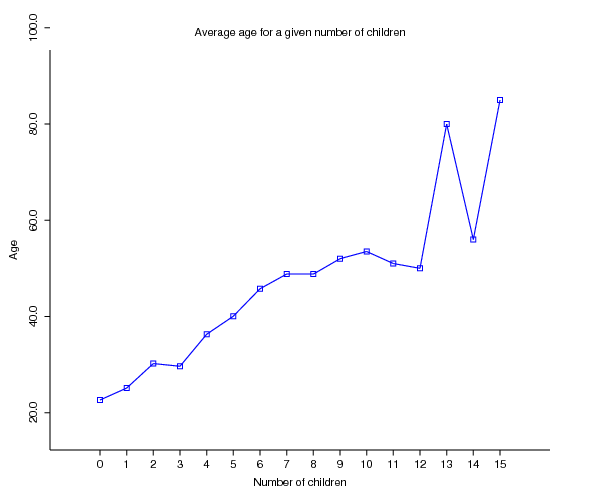Compare your class's Moms to those in Ranquitte,
Haiti
We look at Moms (rather than Moms and Dads) because Mom is certain that
she's produced a child (and Dad never is! But that's another story....).
Activity:
Objective: To compare your class's weighted average birth-rate with that
of the women of Ranquitte, Haiti.
Data: We collected data
on the women of Ranquitte, Haiti by asking women who visited the health
clinic for their age, and for the number of children each has, living or dead,
and then the number still living.
To make a useful comparison, we need the ages of your group of mothers, and the
number of children they have now.
Questions/Comments/Problems:
- If every woman in a population always had five children, but none of them
ever survived to adulthood, what would happen to the population? Could it still
grow?
What would you expect to see happen to this population, if the trend
continued?
For this reason, we need to compare mortality rates (that is, numbers of dead
children), as well. If your class doesn't want to ask this sensitive question,
that's okay! Talk it over, and see what you want to do.
- We need to consider the age distribution of the parents, in order to make
a fair comparison. For example, young mothers obviously tend to have fewer
children than older mothers on average (since they have had less time to
produce children!). As a general rule, the more time a woman has had to produce
children, the more children she will have. Here's a graph of the situation in
Ranquitte:

We want to find out how many children your mothers have, and how many children
your mothers would have if they were Haitian. Maybe some of your mothers are
Haitian! Use this table to compare the total
number of kids your mothers would have (on average) if they lived in Ranquitte,
Haiti. Add up the numbers in the fourth column and compare it with your class
total.
- Who's got more kids?
- Based on your knowledge of your own communities resources, and Haitian
resources as described in the CIA World Factbook for Haiti, how do the
resources for supporting these children compare between communities?
- For discussion
"Money isn't everything": many of the people in Ranquitte are subsistance
farmers, and, although they don't have much money, they manage to put food on
the table. Health care is sub-standard by US standards: there's no doubt about
that: infant motality is high. Education is catch as catch can. How many kids
should a family have in such a situation?
Website maintained by Andy Long.
Comments appreciated.
